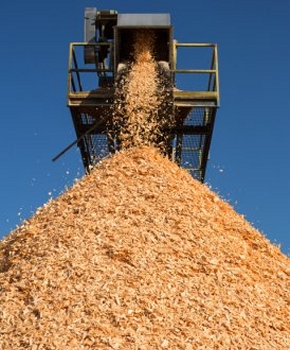
Wood Fiber Prices Reach Five-Year High, May Weaken in Second Half 2019The Softwood Fiber Price Index (SFPI) has risen the past two years. In the 1Q/19, the Index reached its highest level since 2014, according to the Wood Resource Quarterly. Higher wood fiber costs in the US South, Russia and New Zealand contributed to most of the rise of the SFPI in late 2018 and early 2019. It is likely that the upward trend will come to a halt during the summer, and then start to decline in the second half of 2019.  Wood fiber costs for softwood pulp manufacturers in 16 countries have gone up the past two years, and as a result, in the 1Q/19, the SFPI price index reached its highest level in five years.
Wood fiber costs for softwood pulp manufacturers in 16 countries have gone up the past two years, and as a result, in the 1Q/19, the SFPI price index reached its highest level in five years.
July 11, 2019 - The cost of wood fiber for the world's pulp industry has trended upward for over two years because of higher demand and a tightening regional supply of wood fiber. From the 1Q/17 to the 1Q/19, prices for pulp logs and woodchips (in the local currencies) have gone up in all 17 countries tracked by the Wood Resource Quarterly. The only exception has been in Eastern Canada, where an oversupply of sawmill residues has put downward price pressure on both logs and chips. The biggest price increases the past few years have been seen in Western North America, the Nordic countries, Russia and Indonesia. The Softwood Fiber Price Index (SFPI) inched up 0.5% quarter-over-quarter in the 1Q/19. This was the third consecutive quarterly increase and resulted in the highest index seen since in late 2014. Of the regions covered by the index, Russia, New Zealand and the US South contributed the most to this rise. However, there were also a few regions in the world where pulp log prices fell. Central Europe, for example, saw high supply of logs from storm and insect damaged trees — pushing log prices downward in late 2018 and early 2019. Pulp mills along the US Atlantic coast saw their wood fiber costs rise almost 10% over the past year because of higher transportation costs and tighter log supplies related to difficult logging and transportation conditions. With the tight supply of wood fiber in the 1Q/19, prices for wood chips and pulp logs, in both the South Central and Southeastern states, reached their highest levels in almost seven years, reports the North American Wood Fiber Review. The average softwood chip price rose significantly for the first time in over five years. With the weakening pulp and paper market and improved logging conditions, it is likely that softwood fiber prices will decline in many regions during the summer months. Wood Resource Quarterly is published by Wood Resources International, an internationally recognized forest industry-consulting firm. For further information visit: www.woodprices.com. SOURCE: Wood Resources International LLC |